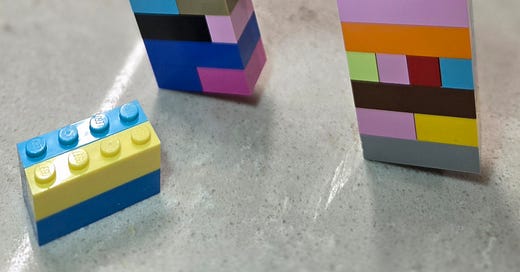Why Smart Teams Are Doing Less, on Purpose
In a world obsessed with complexity, the boldest move might be the unexpected.
Imagine this is your team’s next big challenge:
The bridge is tilting. It doesn’t look right.
So - quick - how do you fix it?
If your first instinct was “add a brick,” you’re not alone.
Researchers at the University of Virginia ran this as a test, and nearly everyone chose to add something. It turns out, most people reach for more. More structure, more support, more stuff. Because addition feels like progress. It looks like effort. It signals action.
But here’s the real kicker: sometimes the best fix is to leave it out—or even remove more.
The Hidden Cost of "More"
Every addition has invisible costs:
Cognitive Load: More options = more confusion.
Maintenance Debt: Everything you add becomes someone’s problem.
Slower Speed: Complexity compounds and kills momentum.
Remember: complexity often signals indecision.
Simplicity? That’s decisiveness with teeth.
Subtraction is an Executive Function
Anyone can add.
It takes leadership to remove.
The best teams:
Sunset features as often as they launch them.
Leave meetings where they add no value.
Kill projects that aren’t pulling their weight.
They edit relentlessly.
Because they know that every “yes” carries a hidden “no” somewhere else.
Let’s be clear: subtraction isn’t blind minimalism. It’s strategic restraint - the kind that requires guts, not laziness.




